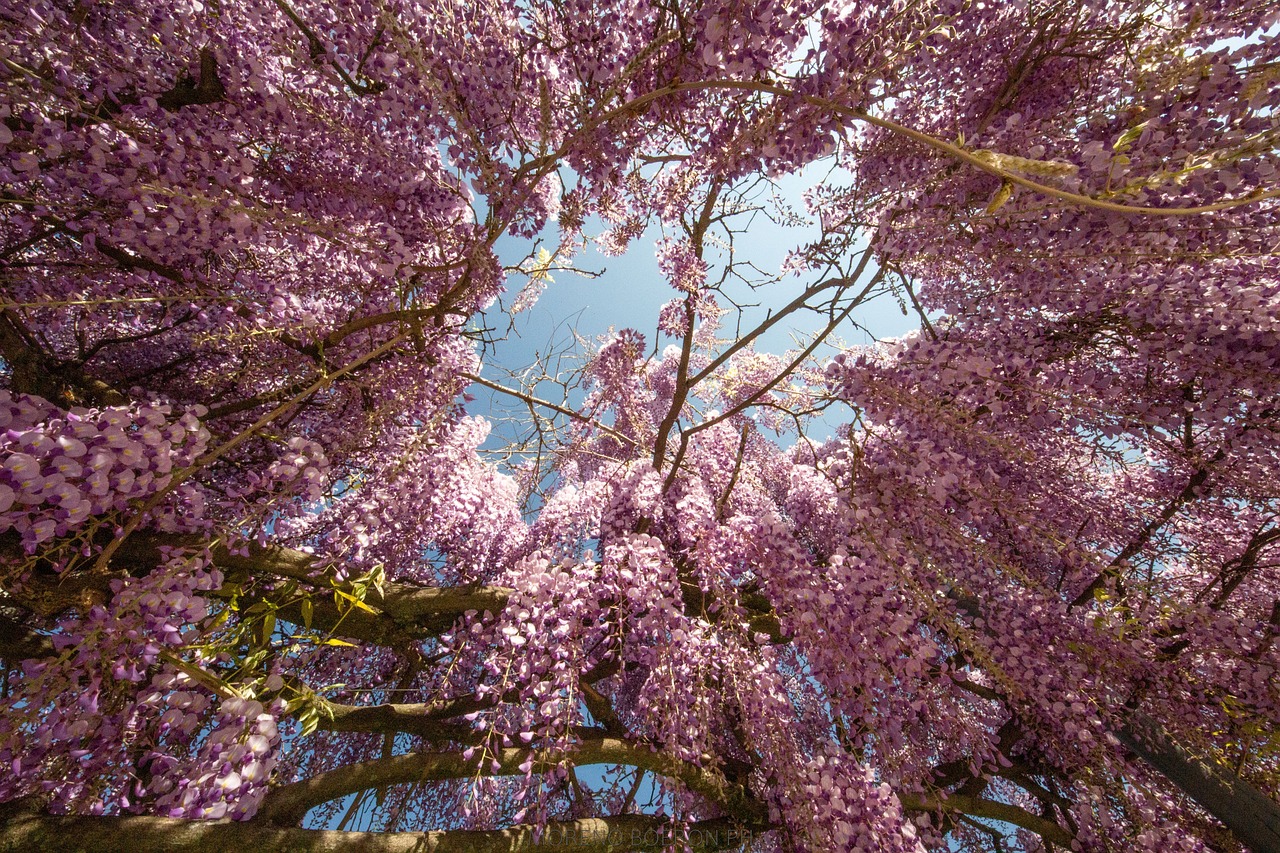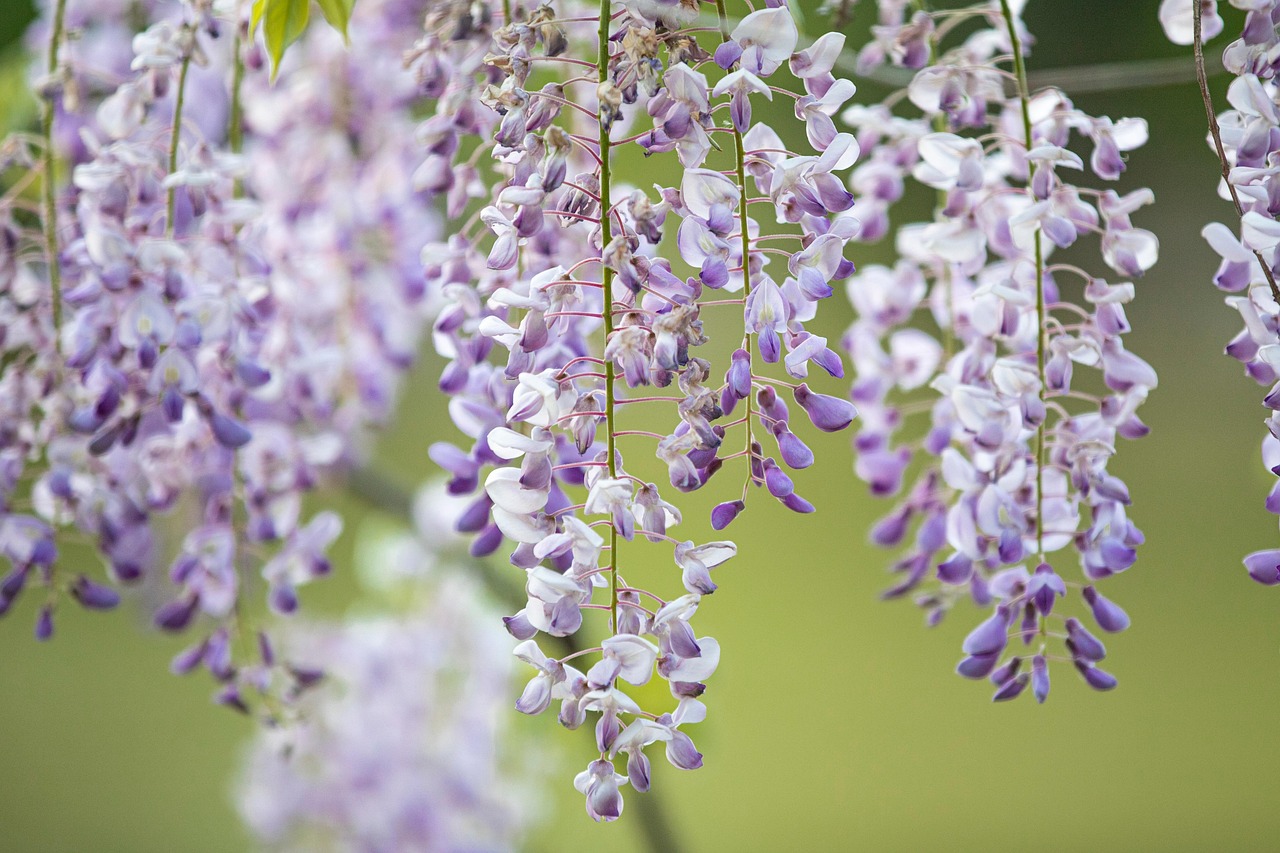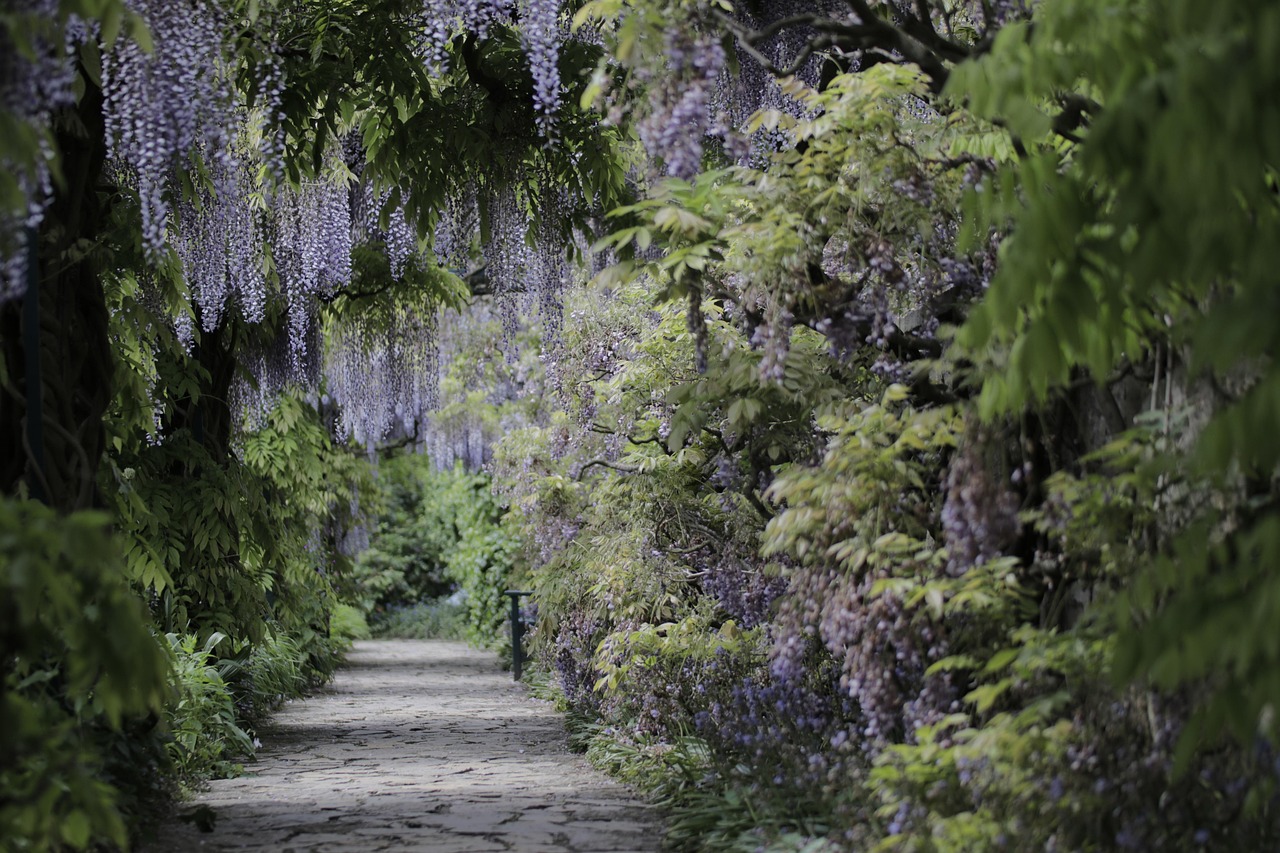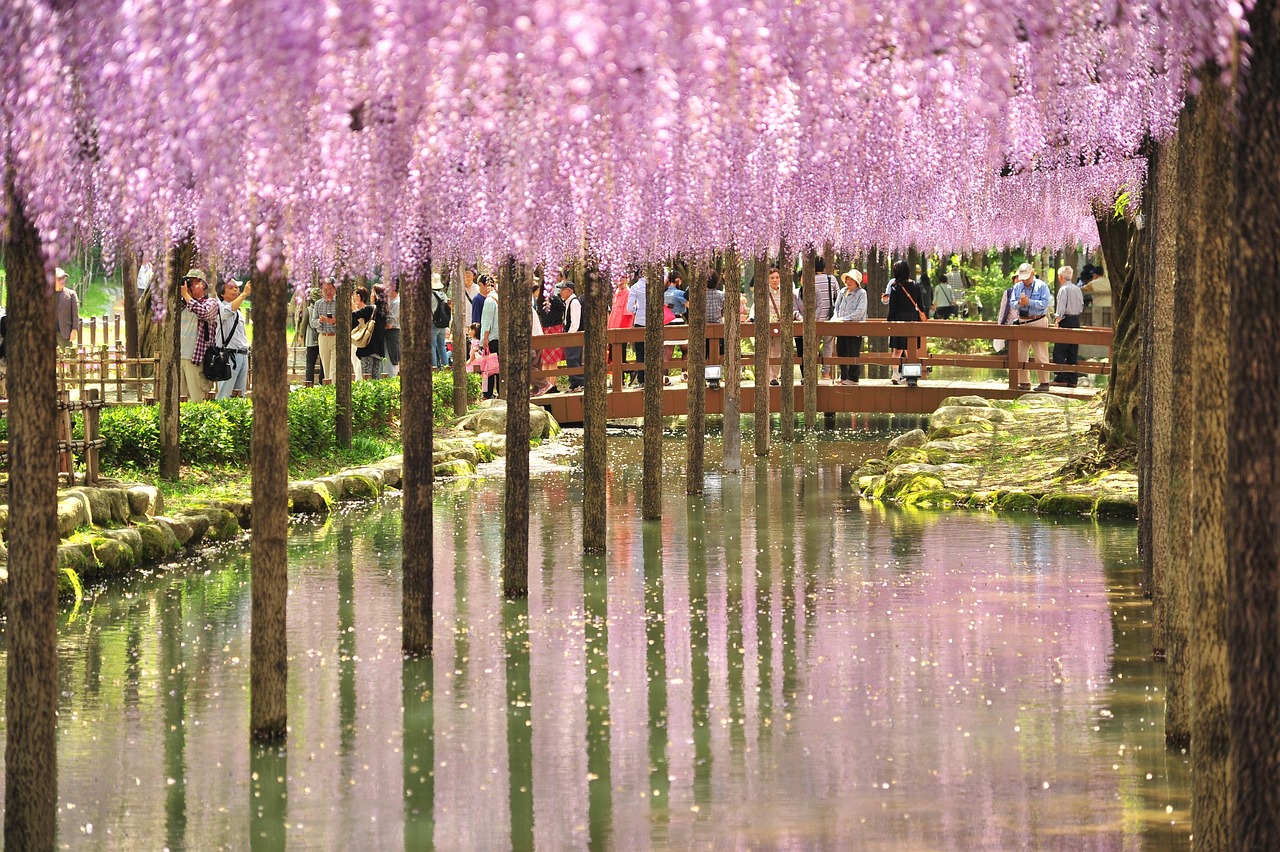Growing wisteria in your garden offers stunning beauty and fragrant blooms, but it also comes with challenges such as aggressive growth and maintenance demands. Understanding the pros and cons can help you decide if this plant is right for your space.
Wisteria is a flowering plant known for its spectacular cascading clusters of purple, blue, or white flowers. This vine can create a stunning focal point in any garden, draping over pergolas, arbors, or trellises. However, while it brings a unique charm, there are important considerations to keep in mind.

The allure of wisteria lies not only in its beauty but also in its ability to attract pollinators like bees and butterflies. This makes it a great addition to a garden that aims to support local wildlife. However, potential gardeners should be aware that wisteria can behave like an invasive species in certain areas, leading to overgrowth that may choke out other plants.
Understanding Wisteria
Wisteria belongs to the Fabaceae family and is native to Asia and the Americas. There are several species, with Chinese wisteria (Wisteria sinensis) and Japanese wisteria (Wisteria floribunda) being the most popular among gardeners. These plants thrive in full sun and well-drained soil. They can grow rapidly, reaching heights of up to 30 feet or more under ideal conditions.
To make an informed decision about growing wisteria, it is essential to understand both the advantages and disadvantages associated with this plant. Below are some key points that highlight the pros and cons of having wisteria in your garden.

| Pros | Cons |
|---|---|
| Beautiful and fragrant flowers | Can be invasive if not managed |
| Attracts pollinators | Requires regular pruning |
| Offers shade and privacy when grown on structures | May damage structures if not supported properly |
| Low maintenance once established | Can take years to bloom |
When considering whether to introduce wisteria into your garden, weigh these factors carefully. The beauty of wisteria can transform your outdoor space. However, its growth habits may require ongoing attention and care.
Benefits of Growing Wisteria
The benefits of growing wisteria extend beyond mere aesthetics. Many gardeners find that the plant enhances their landscape significantly. Here are some notable advantages:
- Stunning Visual Appeal: Wisteria blooms in long clusters, creating a dramatic display that can turn any garden into a vibrant oasis.
- Fragrance: The sweet and pleasant scent of wisteria flowers adds a sensory element to your garden experience.
- Wildlife Friendly: By attracting bees and butterflies, wisteria contributes positively to local ecosystems.
- Drought Tolerance: Once established, wisteria is relatively drought-tolerant, making it a good choice for gardens in drier climates.
While these benefits are enticing, it is equally important to consider the challenges that come with growing wisteria. Understanding both sides will help you make a well-rounded decision.

Challenges of Growing Wisteria
The challenges associated with wisteria growth can be significant. These include issues related to maintenance and environmental impact:
- Aggressive Growth: Wisteria can spread quickly and may take over garden spaces if not properly controlled.
- Maintenance Needs: Regular pruning is essential to keep the plant healthy and manageable.
- Delayed Blooming: Some varieties may take several years before they produce flowers, which can be discouraging for new gardeners.
- Structural Damage: If grown on an arbor or trellis, the weight of the vines can cause damage if not adequately supported.
Evaluating the pros and cons of growing wisteria allows gardeners to make informed choices about their landscaping options. This understanding is crucial for ensuring that the beauty of wisteria enhances rather than complicates your garden experience.
How to Successfully Grow Wisteria
Growing wisteria can be a rewarding experience, but it requires careful planning and attention to detail. To ensure successful growth, there are several important factors to consider, including soil conditions, light requirements, and proper support structures. Below are key tips for cultivating healthy wisteria plants.

Choosing the Right Location
Wisteria thrives in a sunny environment. When selecting a location for planting, make sure the area receives at least six hours of direct sunlight each day. Additionally, consider the following:
- Soil Quality: Wisteria prefers well-drained, fertile soil. Amend the soil with organic matter, such as compost, to enhance drainage and nutrient content.
- Space: Ensure there is ample space for the plant to grow. Wisteria can spread significantly, so give it enough room to flourish without encroaching on other plants.
- Protection from Wind: Choose a sheltered area to protect wisteria from strong winds, which can damage the vines or cause them to break.
Planting Wisteria
Once you have selected an appropriate location, the next step is planting. Follow these guidelines for optimal results:
- Timing: The best time to plant wisteria is in early spring or fall, when temperatures are moderate.
- Digging the Hole: Dig a hole that is twice as wide as the root ball and as deep as the plant’s container.
- Placement: Place the wisteria in the hole, ensuring the crown of the plant is level with the surrounding soil.
- Backfill: Fill the hole with soil, tamping it down gently to eliminate air pockets. Water thoroughly after planting.
Providing Support for Growth
Wisteria is a vigorous climber and needs a strong support structure to thrive. Here are some options for supporting your wisteria:
- Trellis: A sturdy trellis can support the rapid growth of wisteria vines. Make sure it is anchored securely in the ground.
- Pergolas and Arbors: These structures provide an excellent framework for wisteria, allowing it to create a beautiful canopy.
- Cables or Fencing: For a more rustic look, consider using cables or a strong fence to guide the growth of the vines.
Caring for Wisteria
Caring for your wisteria involves regular maintenance and attention to its needs. Here are some essential care tips:
Watering
While wisteria is drought-tolerant once established, young plants need consistent moisture. Follow these watering guidelines:
- Initial Watering: Water newly planted wisteria deeply once a week until established.
- Established Plants: Reduce watering frequency as the plant matures. Monitor soil moisture and water during prolonged dry spells.
Fertilizing
Fertilizing can promote healthy growth and flowering. Consider these points:
- Nitrogen Content: Use a low-nitrogen fertilizer to encourage blooming rather than excessive foliage growth.
- Timing: Fertilize in early spring before new growth starts and again after flowering to support the plant’s energy needs.
Pruning
Pruning is crucial for maintaining wisteria’s shape and promoting blooming. Here are key pruning tips:
- Timing: Prune in late winter or early spring before new growth begins.
- Technique: Remove any dead or overcrowded branches and cut back long shoots to encourage bushier growth.
- Size Control: Regularly trim back vines that are growing out of control to prevent invasive behavior.
Pest and Disease Management
Wisteria is generally resistant to pests and diseases, but some issues can arise. Here are common problems and how to manage them:
- Aphids: These small insects can be managed with insecticidal soap or by rinsing them off with water.
- Crown Rot: Ensure proper drainage to prevent this fungal disease, which can be fatal to the plant.
- Mildew: Maintain good air circulation around the plant to prevent fungal infections.
By following these tips for successful growth and care of wisteria, you can enjoy its stunning beauty while minimizing potential issues. With patience and attention, your garden can be transformed into a floral paradise.
Varieties of Wisteria
There are several varieties of wisteria, each with unique characteristics that cater to different garden styles and preferences. Understanding these varieties can help you choose the best one for your space. Below are some of the most popular types of wisteria.
Chinese Wisteria (Wisteria sinensis)
Chinese wisteria is one of the most well-known species. It produces long, drooping clusters of flowers that can be lavender, blue, or white. Here are some highlights:
- Growth Rate: This species grows vigorously and can reach heights of 20 to 30 feet.
- Bloom Time: Typically blooms in late spring and can last for several weeks.
- Fragrance: Known for its sweet scent, making it a favorite for gardens seeking aromatic plants.
Japanese Wisteria (Wisteria floribunda)
Japanese wisteria is celebrated for its stunning, cascading flower clusters and varied color options, including white, purple, and pink. Notable features include:
- Flower Clusters: Produces longer flower racemes, which can reach up to 3 feet in length.
- Blooming Period: Blooms later than Chinese wisteria, usually from mid to late spring.
- Cultural Significance: Highly regarded in Japanese culture and often featured in traditional gardens.
American Wisteria (Wisteria frutescens)
This native variety is less aggressive than its Asian counterparts and is a good choice for gardeners concerned about invasiveness. Here are its main attributes:
- Size: Grows up to 30 feet but is generally more manageable than other species.
- Flower Color: Typically blooms in shades of purple and white.
- Wildlife Friendly: Attracts pollinators and provides habitat for local wildlife.
Wisteria in Different Garden Styles
Wisteria can complement various garden styles beautifully. Its versatility allows it to enhance both traditional and modern landscapes. Here are some ideas on how to incorporate wisteria into different garden designs:
Traditional Gardens
In traditional gardens, wisteria can be used to create charming focal points:
- Pergolas: Train wisteria over wooden pergolas to create shaded seating areas adorned with flowers.
- Trellises: Use decorative trellises to support wisteria vines against walls or fences, adding vertical interest.
Modern Gardens
For modern landscapes, wisteria can bring a touch of elegance:
- Sculptural Elements: Combine wisteria with minimalist sculptures for a striking contrast between natural and artificial elements.
- Container Gardening: Grow wisteria in large pots or containers to add a splash of color on patios or balconies.
Cultural Significance and Uses
Wisteria holds cultural significance in various regions around the world. Its beauty and symbolism make it a popular choice for many occasions:
Symbolism
In many cultures, wisteria symbolizes love, endurance, and the beauty of nature. It is often used in weddings and other celebrations. In Japan, the wisteria flower is associated with grace and beauty and is celebrated during seasonal festivals.
Uses in Landscaping
Wisteria is not only visually appealing but can also serve functional purposes in landscaping:
- Shade Provider: When grown over structures, wisteria provides shade, making outdoor spaces more comfortable.
- Noise Barrier: Dense foliage can act as a sound barrier, helping to reduce noise pollution in urban settings.
The Environmental Impact of Wisteria
The environmental impact of growing wisteria varies depending on the variety chosen and management practices. It is important to consider these factors when deciding to plant this vine.
Invasive Species Concerns
Certain varieties of wisteria, particularly the Chinese and Japanese species, can become invasive outside their native habitats. To minimize environmental impact:
- Select Native Varieties: Consider planting American wisteria to reduce the risk of invasiveness.
- Control Growth: Regular pruning and management can help prevent aggressive spreading into unintended areas.
Biodiversity Contributions
While wisteria can pose challenges, it also contributes positively to biodiversity:
- Pollinator Support: The flowers attract bees, butterflies, and other beneficial insects.
- Wildlife Habitat: The dense growth provides shelter for various small animals and birds.
Understanding the varieties of wisteria and their uses in different garden styles helps promote informed decisions. By considering both the aesthetic appeal and environmental impact, gardeners can enjoy the beauty of wisteria while maintaining a healthy ecosystem.
Maximizing the Benefits of Wisteria
To fully enjoy the beauty and benefits of wisteria in your garden, it’s essential to implement effective strategies for growth and maintenance. Here are some additional tips to maximize its advantages while minimizing challenges:
Creating a Supportive Environment
Establishing a healthy growing environment is key to ensuring that your wisteria thrives:
- Soil Testing: Conduct a soil test to check pH levels and nutrient content. Wisteria prefers slightly acidic to neutral soil (pH 6.0 to 7.0).
- Amendments: Based on soil tests, consider adding lime to raise pH or sulfur to lower it, along with organic fertilizers to enrich the soil.
- Mulching: Apply a layer of mulch around the base of the plant to retain moisture, suppress weeds, and maintain soil temperature.
Seasonal Care Practices
Different seasons bring unique challenges and opportunities for wisteria care:
- Spring: Focus on pruning and fertilizing. This is when new growth begins, so ensure the plant is healthy and well-fed.
- Summer: Monitor water levels, especially during dry spells. Mulching can help keep the roots cool and hydrated.
- Fall: Begin preparations for winter by reducing watering and applying a balanced fertilizer to strengthen roots for dormancy.
- Winter: Inspect for any damage from cold weather and prune any dead or diseased branches before new growth starts in spring.
Potential Alternatives to Wisteria
If you find that wisteria may not be suitable for your garden due to its maintenance needs or invasiveness, consider these alternatives that offer similar beauty without the same level of concern:
- Clematis: This vine offers a variety of colors and sizes, providing beautiful blooms while typically being less aggressive than wisteria.
- Honeysuckle: This fragrant vine attracts pollinators and provides colorful flowers, often with a more manageable growth habit.
- Trumpet Vine (Campsis radicans): Known for its vibrant orange flowers, this plant attracts hummingbirds and can be grown in similar conditions.
Final Thoughts
Growing wisteria can be a rewarding endeavor, thanks to its stunning blooms and captivating fragrance. However, it is essential to weigh the pros and cons carefully. With its potential for aggressive growth and maintenance demands, careful planning is crucial.
The beauty of wisteria is undeniable, making it a popular choice for many gardeners. The vibrant colors, sweet scents, and ability to create lush, shaded areas can enhance any garden design. However, understanding its growth habits and environmental impact is vital. By selecting appropriate varieties and implementing effective care strategies, you can enjoy all the beauty that wisteria has to offer while mitigating potential issues.
Ultimately, whether you choose to incorporate wisteria into your garden or opt for alternatives, the key is to create a space that reflects your style while supporting local wildlife and maintaining ecological balance. Happy gardening!
